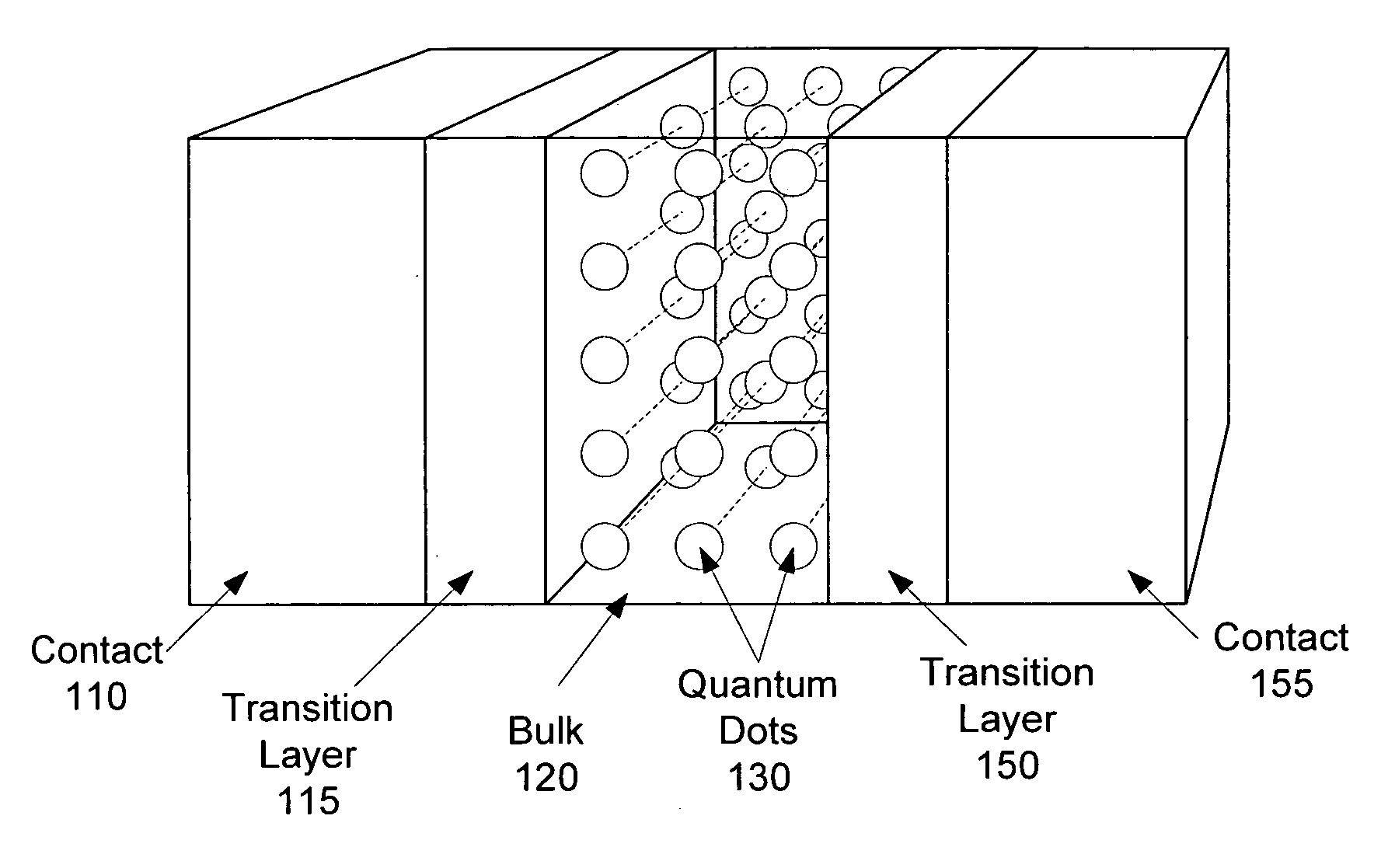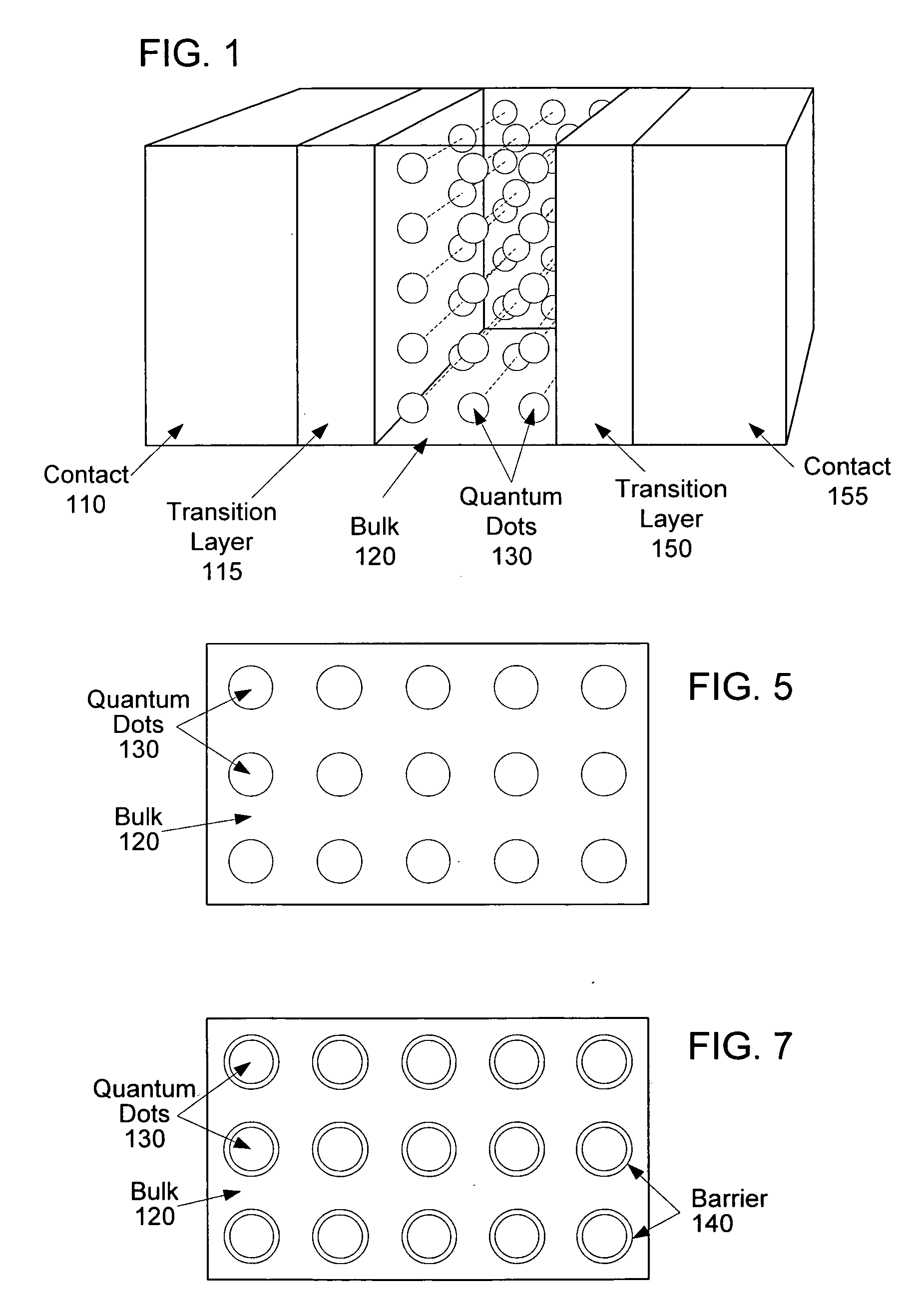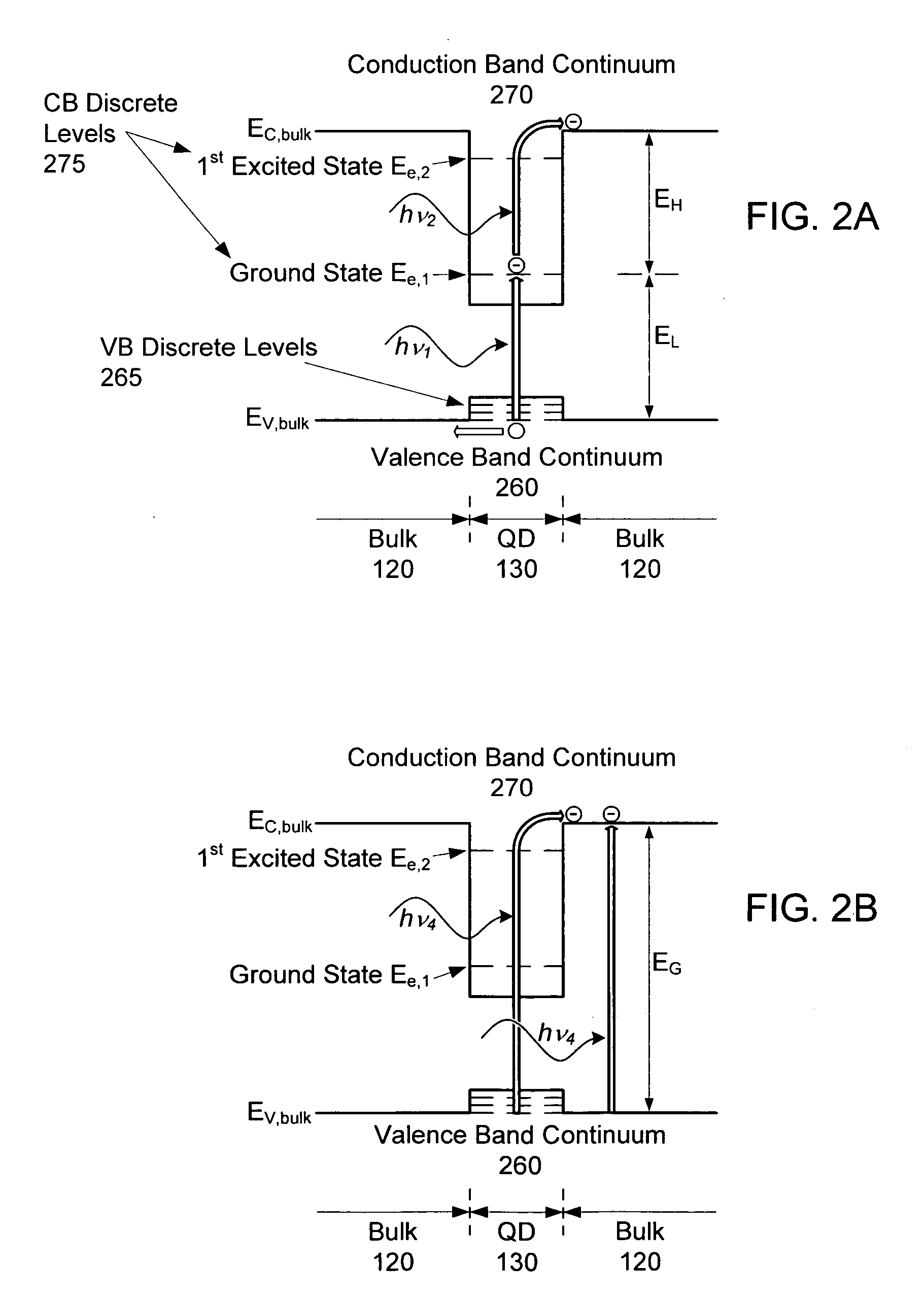Intermediate-band photosensitive device with quantum dots having tunneling barrier embedded in organic matrix
a photosensitive device and organic matrix technology, applied in the field of photosensitive optoelectronic devices, can solve the problems of weak coulomb interaction between electrons and holes in inorganic materials, and the general poor carrier mobility of insulators
- Summary
- Abstract
- Description
- Claims
- Application Information
AI Technical Summary
Problems solved by technology
Method used
Image
Examples
Embodiment Construction
[0055] One method being explored to improve the efficiency of solar cells is to use quantum dots to create an intermediate band within the bandgap of the solar cell. Quantum dots confine charge carriers (electrons, holes, and / or excitons) in three-dimensions to discrete quantum energy states. The cross-sectional dimension of each quantum dot is typically on the order of hundreds of Angstroms or smaller. An intermediate-band structure is distinguishable, among other ways, by the overlapping wave functions between dots. The “intermediate” band is the continuous miniband formed by the overlapping wave functions. Although the wave functions overlap, there is no physical contact between adjacent dots.
[0056]FIG. 1 illustrates an example of an intermediate-band device. The device comprises a first contact 110, a first transition layer 115, a plurality of quantum dots 130 embedded in a semiconductor bulk matrix material 120, an second transition layer 150, and a second contact 155.
[0057] ...
PUM
 Login to View More
Login to View More Abstract
Description
Claims
Application Information
 Login to View More
Login to View More - R&D
- Intellectual Property
- Life Sciences
- Materials
- Tech Scout
- Unparalleled Data Quality
- Higher Quality Content
- 60% Fewer Hallucinations
Browse by: Latest US Patents, China's latest patents, Technical Efficacy Thesaurus, Application Domain, Technology Topic, Popular Technical Reports.
© 2025 PatSnap. All rights reserved.Legal|Privacy policy|Modern Slavery Act Transparency Statement|Sitemap|About US| Contact US: help@patsnap.com



